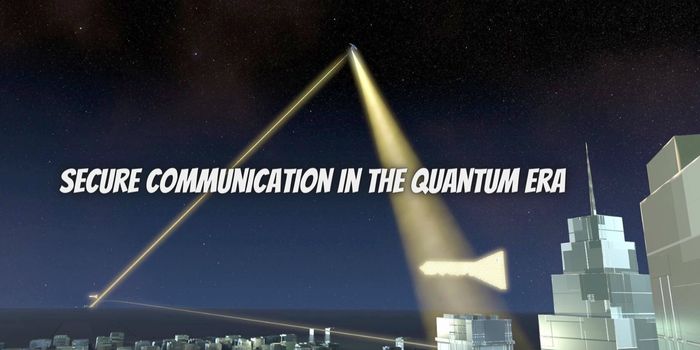Quantum Key Distribution: Ensuring Secure Communication in the Quantum Era
In the modern networked society, secure communications are essential. As human dependence on digital technologies increases, so does the need to protect sensitive data from unlawful access. The demands for secure communications are ever-increasing, from money transfers and personal information to government business and vital infrastructure. While traditional encryption techniques, including asymmetric and symmetric encryption algorithms, have long been the foundation for secure communications, these strategies are not immune to attack, especially given the rapid advances in computing capabilities. With the advent of quantum technology, standard encryption techniques will soon be obsolete and pose an immediate threat to data security. Unsurprisingly, most institutions are already enhancing their communication infrastructure through Quantum-Secure Network as a Service. Here is everything you should know about QKD;
Why Is Quantum Key Distribution (QKD) Ideal Today?
QKD represents a fundamental shift in secure communications. It uses concepts of quantum physics to provide uncompromised security that ensures intercepted information remains undetected. In addition, QKD has the potential to secure communication channels in the quantum age and is currently gaining traction as a possible means to counter the potential dangers of quantum computing.
The Definition And Principles Of QKD
QKD is a cryptographic mechanism that uses quantum mechanical principles to establish and disseminate keys for encryption securely. The essential premise of QKD involves using quantum states to transmit information. Moreover, QKD enables the secure generation, transmission, and dissemination of encryption keys using features such as the Heisenberg uncertainty concept and quantum entanglement.
Quantum Cryptography And Mechanics – Concepts
To understand QKD, it is worthwhile first to understand the basics of quantum physics. Quantum mechanics in physics is about particle activity at the quantum scale. Additionally, superposition, uncertainty principle, and entanglement are essential concepts in quantum cryptography. These concepts form the cornerstone of QKD systems.
Foundations Of Quantum Entanglement, Quantum States, And Heisenberg Uncertainty
Quantum entanglement occurs when two or more particles are joined, regardless of distance. This property enables the secure exchange of data. According to the Heisenberg uncertainty concept, it’s difficult to measure some pairings of attributes, including location and traction, simultaneously with pinpoint accuracy. In QKD, quantum states represented by qubits serve as the basis for information transmission.
QKD: Ensuring Safe Communication Channels
QKD eliminates the vulnerabilities of traditional encryption by leveraging concepts from quantum physics. It enables the secure distribution of encryption keys, facilitating the development of safe interaction links. QKD provides verifiable security guarantees that depend on the laws of physics; it’s a viable option for secure communications in today’s quantum age.
Quantum Key Distribution: How Does It Work?
Quantum key generation works via the following methods:
1. Key Evolution: Key Generation And Quantum Entropy
The generation of a random quantum number is the first step in the creation of a QKD key. This process guarantees that the key is both secure and unpredictable. Several approaches to generating the random number include producing photon polarization or using quantum noise. The random number applies when developing the key necessary for encryption.
2, The Key Transfer Via Quantum Transfer
Once you have generated an encryption key, it’s transmitted to a specific recipient. Encrypting the key with quantum states, which are often photons, and sending it through quantum channels, such as optical fibers or empty spaces, is the process of quantum transmission. Given the quantum nature of the transmission, any attempt to track or quantize qubits will disrupt their state and inform the senders of possible eavesdropping attempts.
3. Key Distribution: Secure Handover Of The Key To The rightful Recipient
The recipient receives encrypted quantum states with an encryption key. Then, the receiver extracts the key from the incoming states using quantum measurement methods. It’s important to emphasize that due to the principles of quantum mechanics, possible eavesdropping attempts during key distribution result in noticeable interference, which preserves the confidentiality of the sent key.
4. Key Verification: Ensuring The Integrity And Authenticity Of keys
A critical verification method is used to confirm the validity and reliability of the acquired key. The sender and the target exchange a small amount of the key via a conventional communication channel. Both parties can determine by comparison whether the key was intercepted or interfered with during transmission. If the verification process shows that the key is secure and intact, it can be used for encryption and decryption.
In summary, quantum key distribution offers advantages in eavesdropping detection, security, defense against quantum computing, and long-term survival. Its practical applications span various industries where secure communications are critical. With the advancement of QKD, there’s potential for a safe and robust future for quantum communications.














Post Comment
You must be logged in to post a comment.